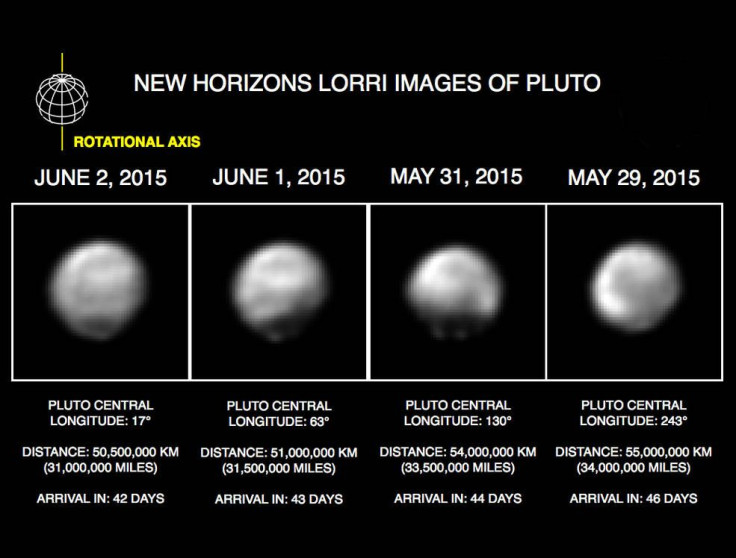Pluto Images Provided By NASA’s New Horizons Reveal Its Complex Surface

Pluto, the tenth known body to directly orbit the sun, is a complex world of both bright and dark terrain, making it more intriguing to astronomers than ever before, according to new images obtained by NASA’s New Horizons spacecraft. Scientists expect to get more information about Pluto’s surface as New Horizons comes closer to its July flyby around the Pluto system.
New Horizons’ Long Range Reconnaissance Imager (LORRI) captured the images between May 29 and June 2, revealing very bright and very dark regions, as well as areas of intermediate brightness, on Pluto’s surface. To draw out more details from the raw, unprocessed pictures beamed back to Earth by New Horizons, scientists used a technique called “deconvolution” to sharpen the pictures and enhanced the contrast.
“Even though the latest images were made from more than 30 million miles away, they show an increasingly complex surface with clear evidence of discrete equatorial bright and dark regions -- some that may also have variations in brightness,” Alan Stern of the Southwest Research Institute in Boulder, Colorado, and the principal investigator of the New Horizons mission, said in a statement.
The new images provide a non-spherical appearance of Pluto, which, scientists said, is not real as it results from a combination of the image-processing technique and Pluto’s large variations in surface brightness. New Horizons has sent back several images since April, helping astronomers identify various surface markings across Pluto, including a bright area at one pole that scientists believe is a polar cap.
“We can also see that every face of Pluto is different and that Pluto’s northern hemisphere displays substantial dark terrains, though both Pluto’s darkest and its brightest known terrain units are just south of, or on, its equator. Why this is so is an emerging puzzle,” Stern said.
New Horizons, launched on Jan. 19, 2006, is currently about 2.9 billion miles from Earth and only 24 million miles from Pluto. The spacecraft is set for the first flyby of Pluto on July 14.
The “new images indicate an increasingly complex and nuanced surface,” Hal Weaver, from the Johns Hopkins University Applied Physics Laboratory in Laurel, Maryland, said in the statement. “Now, we want to start to learn more about what these various surface units might be and what’s causing them."
© Copyright IBTimes 2024. All rights reserved.






















